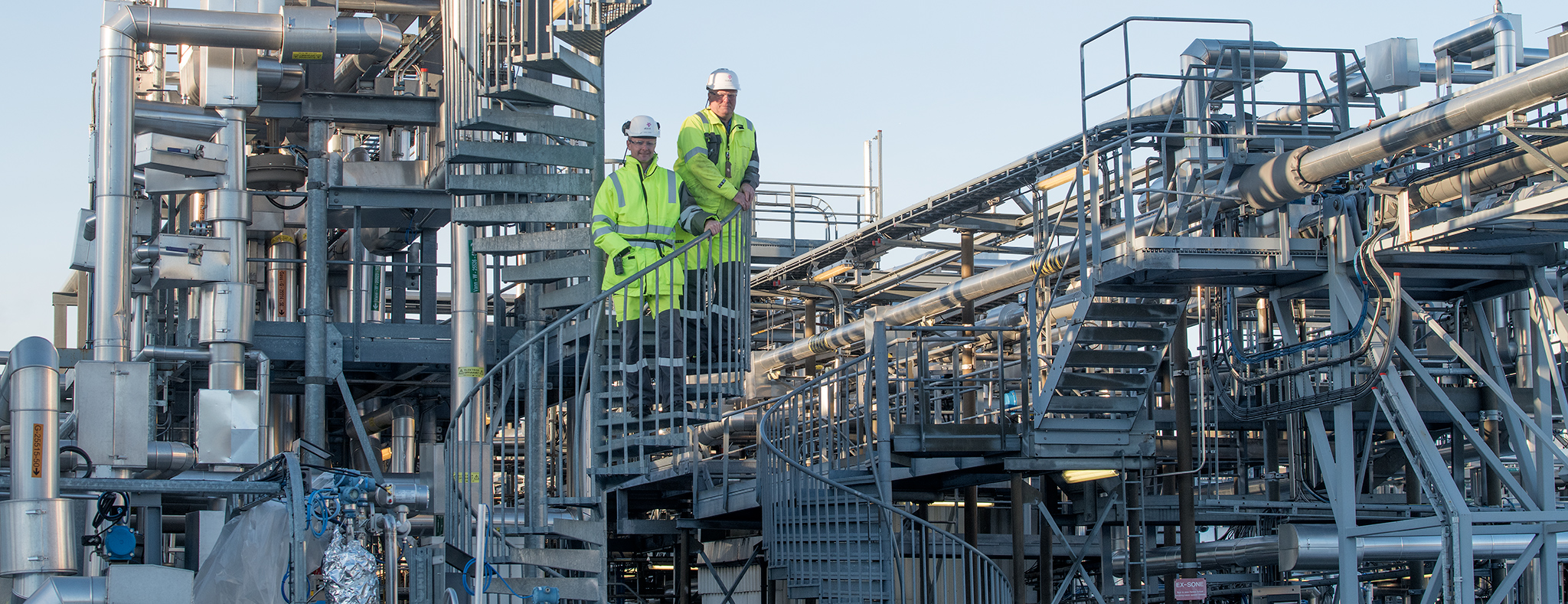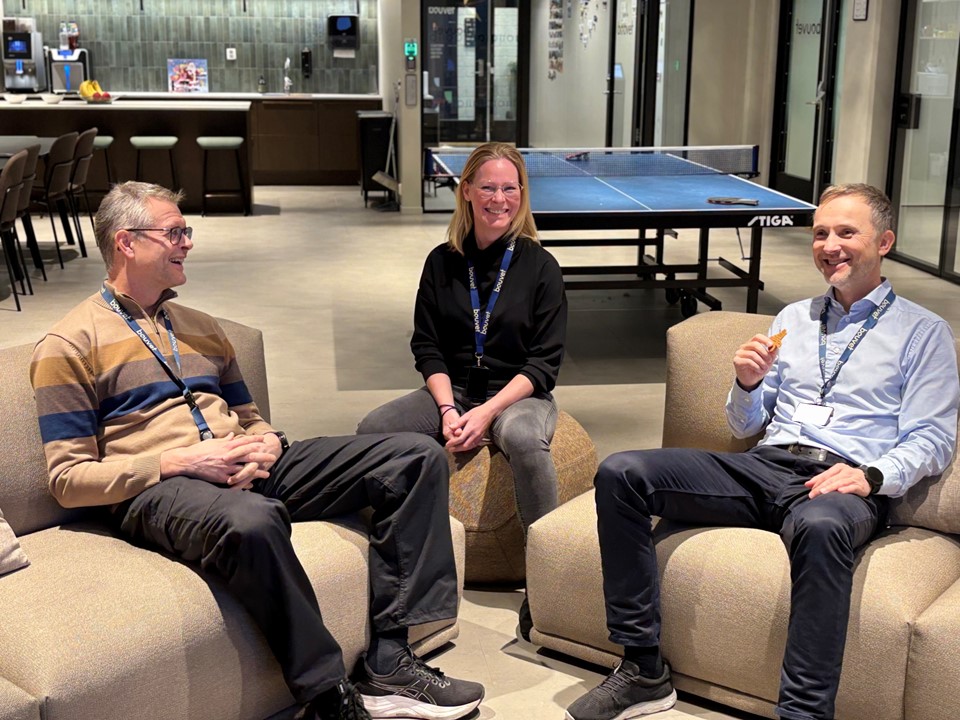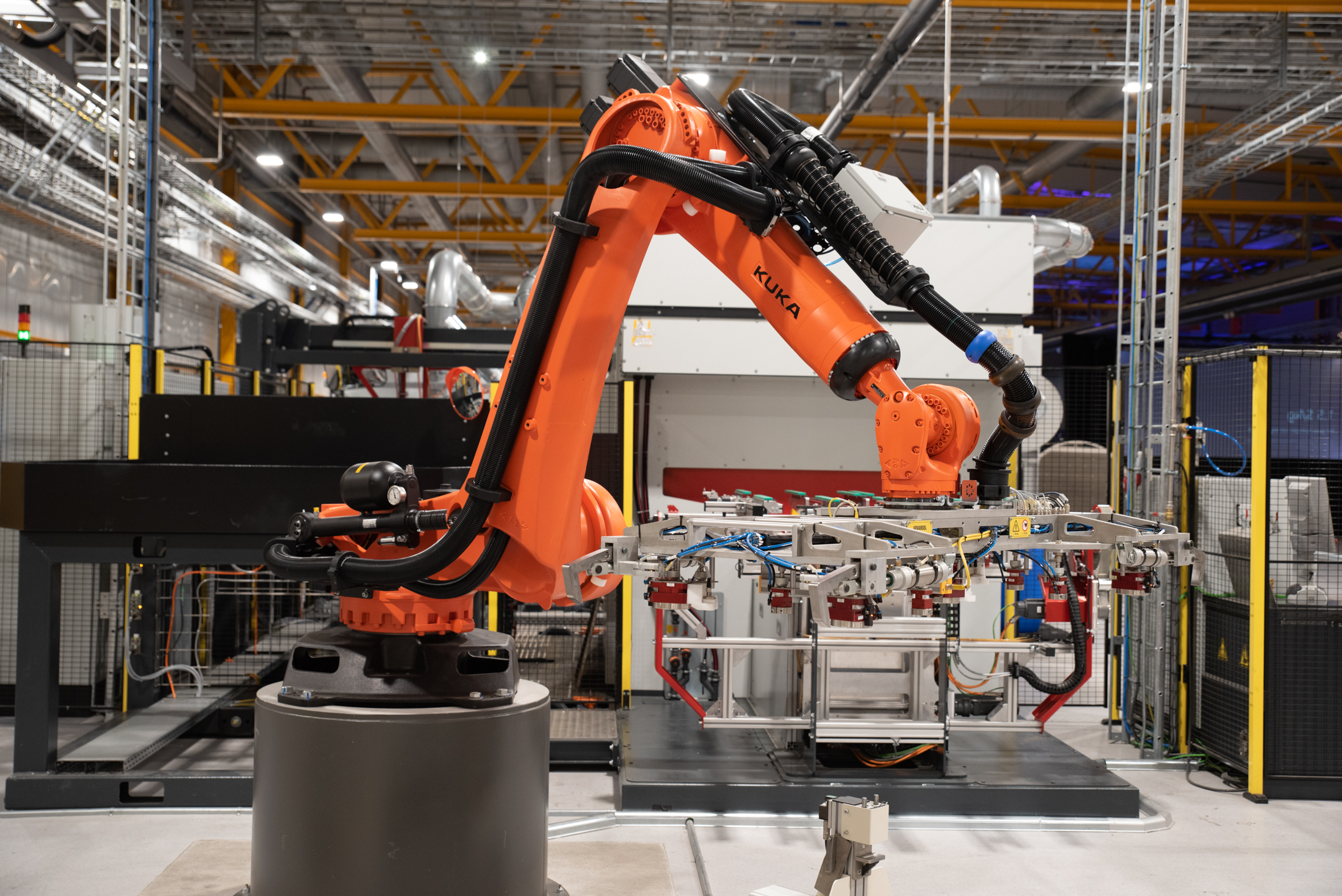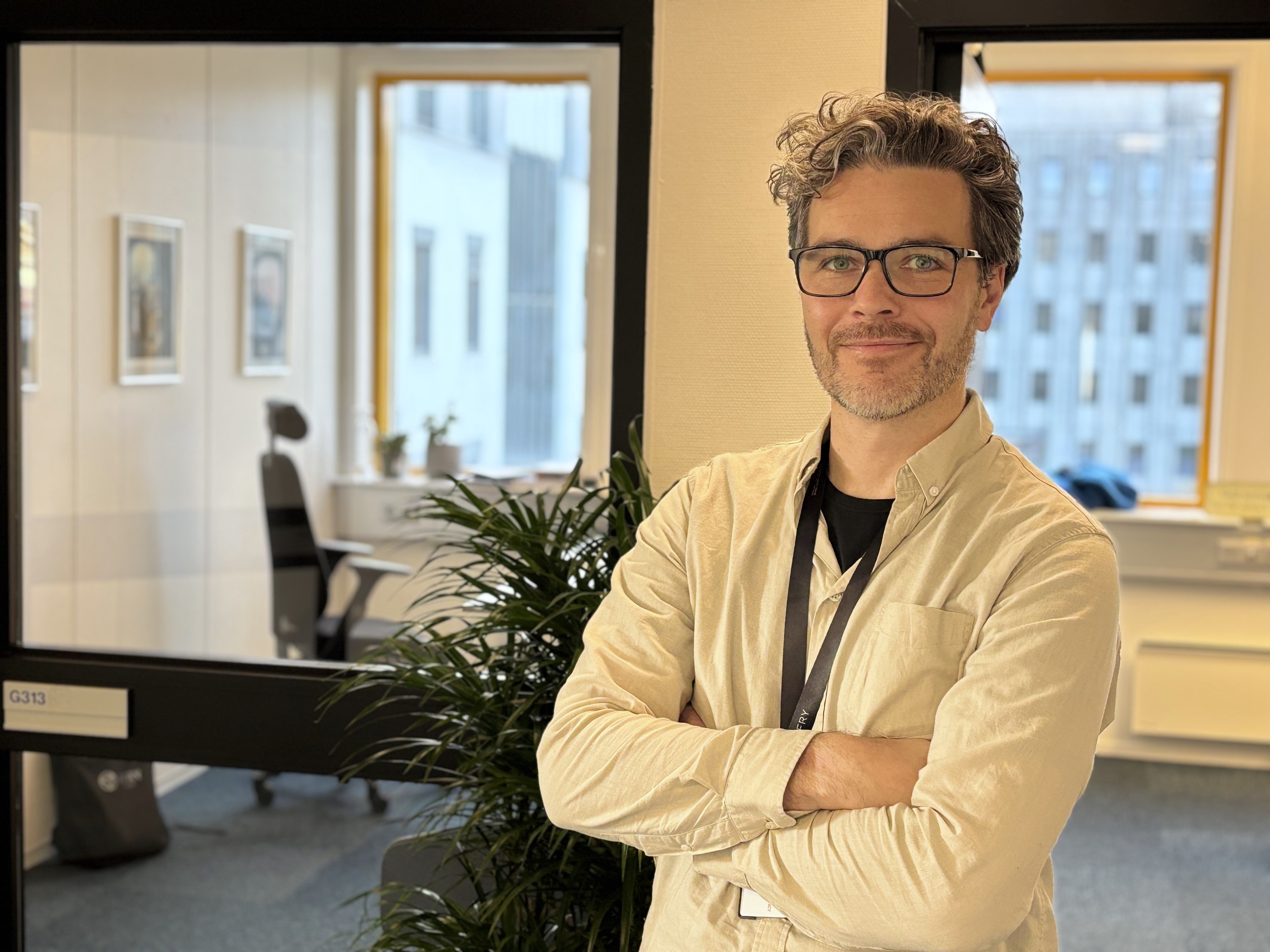The multiphase rig is at the heart of the plant. This comprises modules that can be combined so that equipment and solutions for any production situation can be tested under real-life conditions, from concept to finished technology.
35 test facilities in total
The multiphase rig is the flagship of the Statoil test site at Herøya Industrial Park, but it accommodates seven other permanent rigs within its boundaries as well. “If research assignments turn up that we can’t deal with using existing facilities, we build temporary rigs. That happens frequently,” explains Eirik Lunde, head of the Lab and Test Department in Porsgrunn (P-lab). The multiphase rig is by far the biggest unit at the test site in Porsgrunn.
The company has a total of 35 test facilities at the industrial park. This includes the small labs in Building 92, where the research unit also has material labs and analytical chemistry labs.
Statoil invest huge sums of money in its test facilities every single year. This is necessary in order to maintain the infrastructure, but not least to allow it to develop new projects and technologies. The plant has been converted so that it can handle extremely viscous oils, thick oils that are of a consistency similar to cold honey at room temperature.
Are there many multiphase rigs like this one around the world?
“No, we reckon we’re unique,” replies Lunde. “There are a few other multiphase rigs where tests are performed with genuine oils, but not oils as heavy as the ones we can use. Competing facilities don’t have instrumentation that’s as good as ours, we reckon. Our test facilities help to make Statoil an attractive partner in new fields as we have a strong technology unit. This provides hope of higher extraction rates in the fields, which can lead to enormous profits on a financial level.”
Unique combination of expertise and test facilities
The research manager is nevertheless of the opinion that expertise, experience and data from the Statoil oil and gas fields, used in combination with the unique facilities, are what give the company its biggest strategic advantage.
“The route from concept to qualified technology is short here. That’s unique to us here in Porsgrunn. We work very closely together with the very clever chaps who work at the unit. When our researchers have an idea, we don’t spend a long time developing prototypes. We quickly start testing prototypes on a small scale and then move up to large-scale testing.
“More than NOK 1 billion has been invested in the rig since 1993. An investment of that size doesn’t cost the major oil companies the earth,” says Lunde. “But even if you have a billion on the table in front of you, it takes a long time to develop that combination of expertise and experience you need when it comes to building and operating a test facility of this kind, and you also need researchers who know how to use the facilities. Because of this combination, the research environment in Porsgrunn is in an extremely strong position. We have people at the facilities who’ve been working in the field for longer than Statoil has existed. Our expertise and what’s inside our heads are the most important thing.”.
Like a platform on land – and much more
“The multiphase rig has many of the same main components as a process to the on a platform, but it’s so much more than just that,” explains Lunde. “We can test and optimise everything here, from the well string down into the reservoir, the oil flows to the platforms and the processes that take place on the platforms, to bringing the oil and gas onto land via gas pipes or ships. The research fields that we work with cover the entire value chain in our business.
“The multiphase rig can simulate the service life of the entire field. That’s important, because the fields change as they age. Initially the oil production is excellent. Then later, you get gas breakthrough where the oil is mixed with gas, and then water. There might be over 90 per cent water in tail production. You can’t build different facilities for the various phases. Statoil tests various solutions using the multiphase rig in order to optimise a facility that can tackle all the phases of the life of the field.”
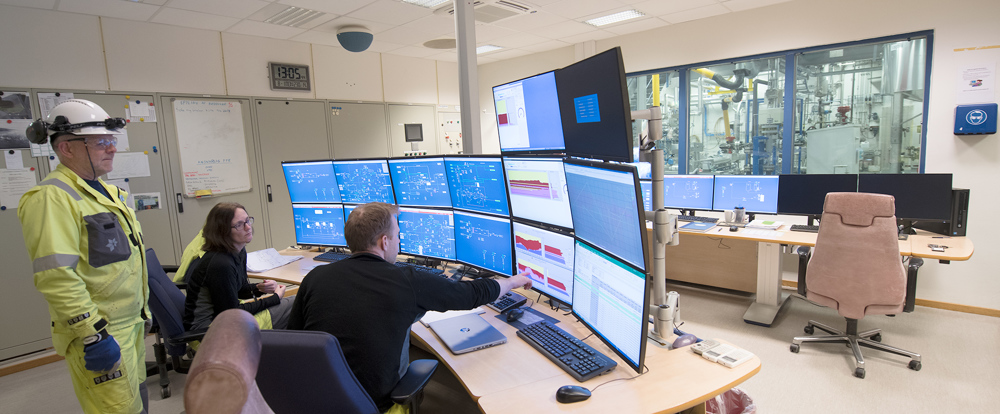
External companies might be allowed in
Not everyone is allowed to rent the multiphase rig for research purposes. The oil company carries out a thorough assessment before allowing external stakeholders in. The multiphase rig is a strategically important facility for Statoil. “That’s why we demand the option of being able to use the results in our own research,” explains Lunde. “The research that others do here allows Statoil to intercept exciting innovations that we don’t necessarily work with ourselves.”
Research worth NOK 2.8 billion a year
Statoil carries out research worth around NOK 2.8 billion a year. Half of this is done internally within the company, and the rest is outsourced to external suppliers. In total, Statoil’s research and technology department employs around 800 people.
Statoil has three primary ambitions for everything it does:
- Always safe
- Always profitable
- The lowest possible CO₂ footprint in everything the company does
These ambitions are reflected in its research initiatives. There is increasing emphasis on future value chains, i.e. renewable energy and CO₂ capture. The test facilities at Herøya are important in these initiatives as well. “We have our own CO₂ capture facility where we’ll be running a long test campaign in the autumn of 2018,” says Lunde.
Statoil at Herøya
Statoil works within six research fields, one of them being lab and test facilities. The test facilities at Porsgrunn are organised as part of that unit.
“Porsgrunn employees make up half of the lab and test unit at Statoil,” explains site manager Jarann Wold Pettersen. “Many Porsgrunn employees are researchers with extremely high levels of education. The unit has a high proportion of PhDs, and lots of people have an international background.”
130 people work with research and technology. 45 staff members are directly involved with the test facilities. They supply engineering services, design work, construction, maintenance and operation of the facilities that our researchers use to test technologies and solutions linked with the various Statoil operations.
Without the multiphase rig, would Statoil have had such an extensive research environment in Porsgrunn?
“That’s a hard question to answer. What’s certain is the fact that development of the multiphase rig and the research surrounding it have been key to Statoil for many years, but we work with lots of other things here as well – research and expertise that aren’t directly related to the test facilities. So I’d probably say we’d have been here anyway.”
Important to be part of HIP
“We’re really pleased to be part of HIP,” says Pettersen. “We have the necessary infrastructure here, and access to qualified personnel when we need it. We enjoy good, close cooperation with Bilfinger in particular. They respond quickly to our requests. Research is changing, and it’s not always easy to predict needs. The fact that Bilfinger under the suppliers are able to turn up and help us out at short notice is a massive advantage.”
Statoil has access to large areas at the park, and the opportunity to expand. The test facility was upgraded at a cost of more than NOK 100 million a few years ago. This was done as part of a project headed by Statoil, with Bilfinger as the primary supplier.
“Most of the changes and maintenance carried out at the facility we do ourselves,” emphasises Pettersen. “Statoil has its own people who deal with engineering and carry out construction and maintenance, but we have to bring in extra personnel when we’re working on major projects.”
05. March 2018

